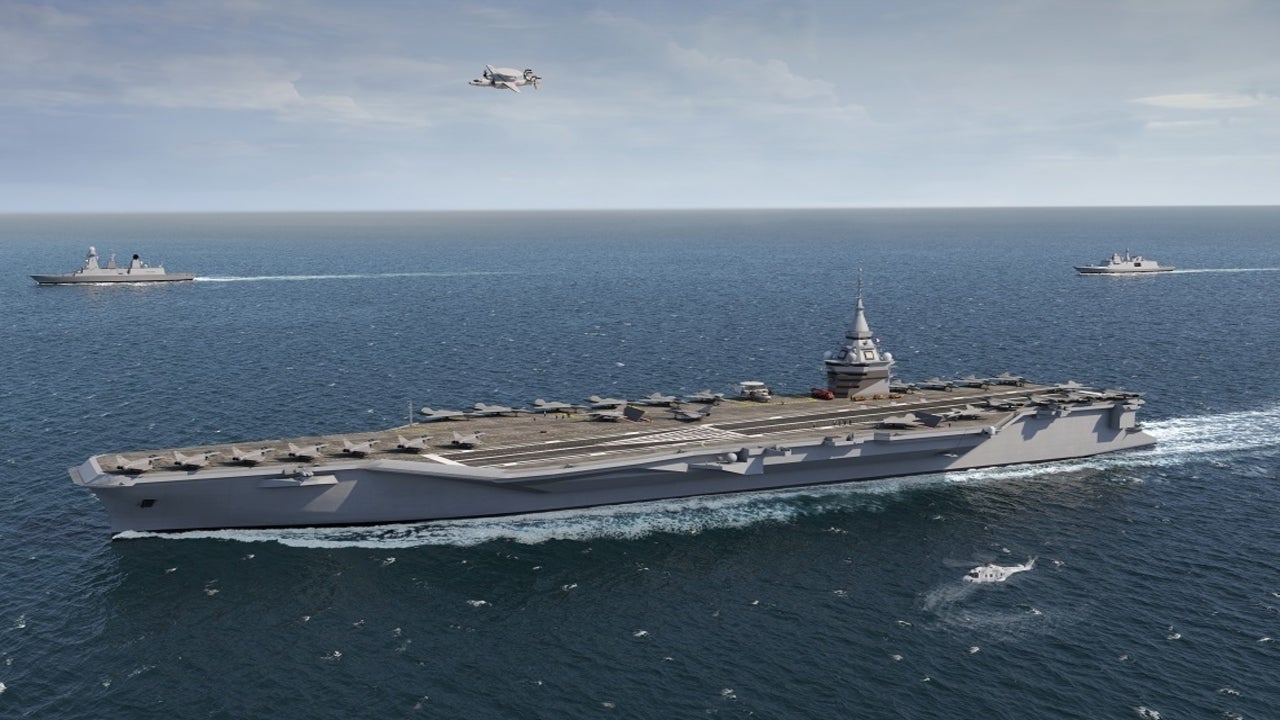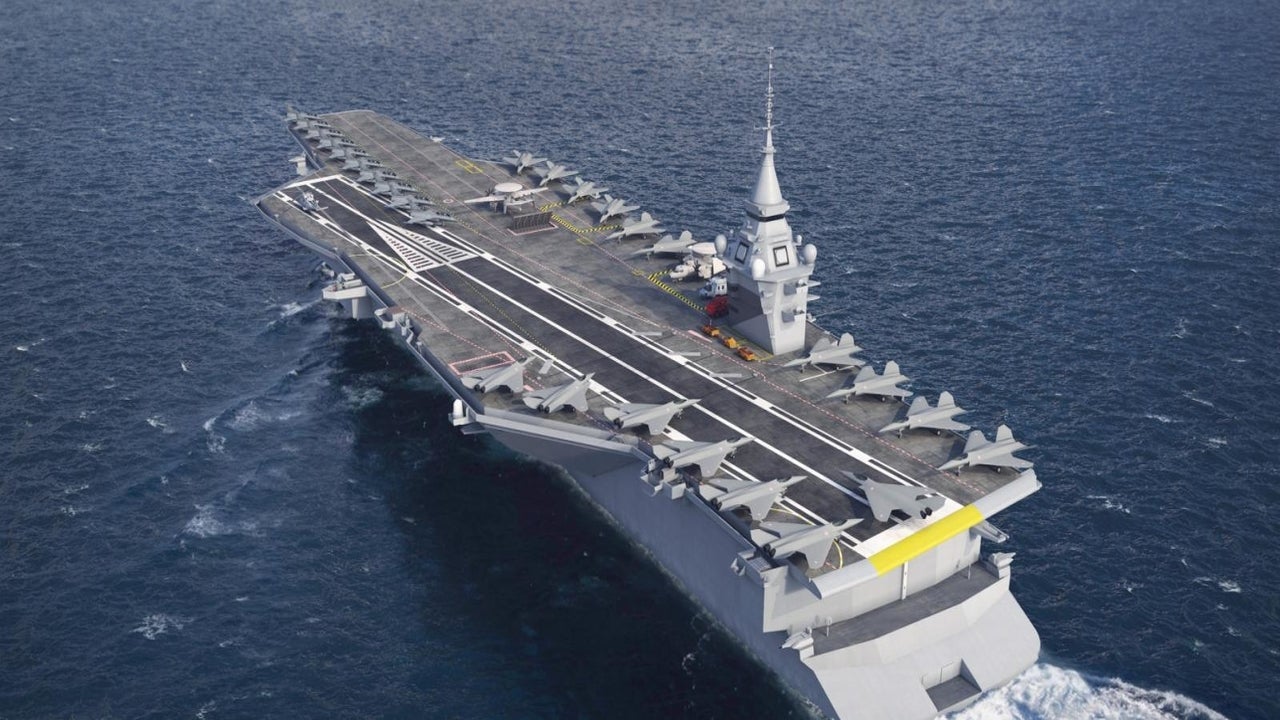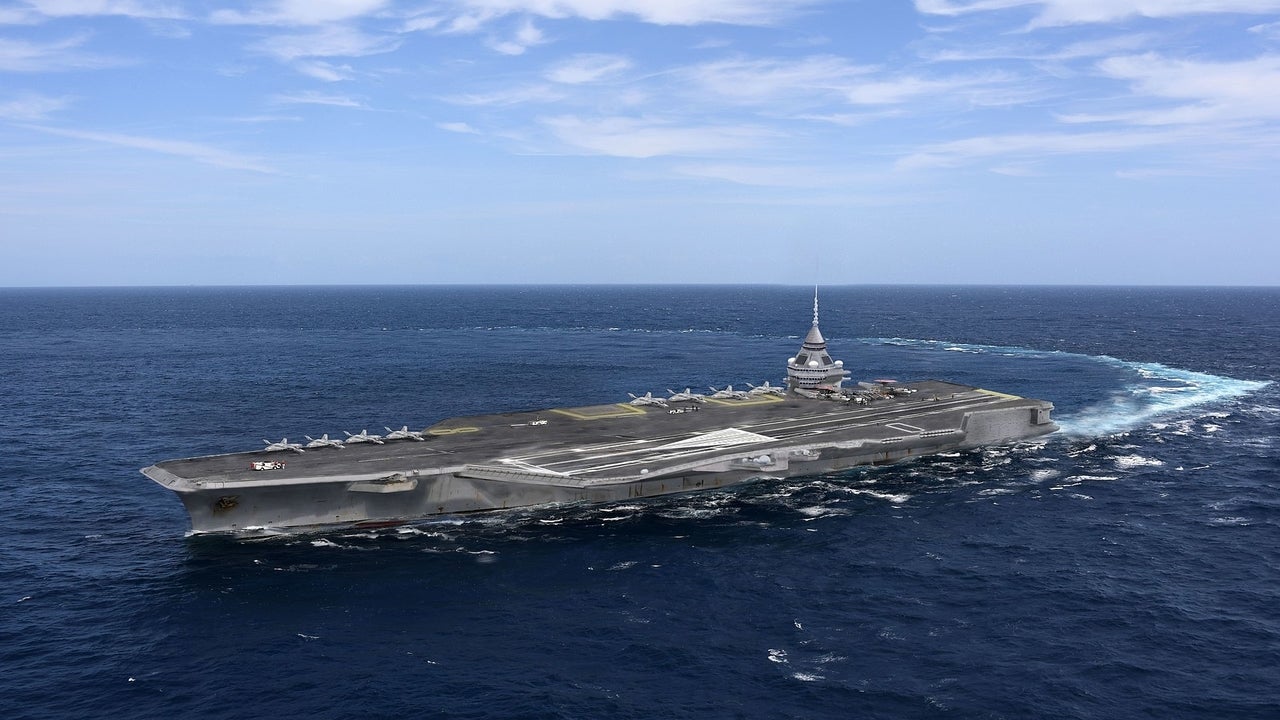Porte-Avions Nouvelle Génération (PANG) is a next-generation nuclear-powered aircraft carrier under development for the French Navy. The new aircraft carrier will replace Charles de Gaulle, the first French nuclear-powered vessel.
The next-generation aircraft carrier programme was initiated by the Directorate General of Armaments (DGA) in 2018. The project is included in the strategic review and the military programming law 2019-2025.
PANG will be bigger and more powerful than its predecessor Charles de Gaulle. Construction on the aircraft carrier is expected to commence in 2025, while its commissioning is scheduled for 2038. The preliminary design phase of the vessel was launched in March 2021 and the first sea trials are expected to take place in 2036.
PANG development details
The French aircraft carrier will be constructed at Chantiers de l’Atlantique shipyard in Saint-Nazaire, France. The hull assembly will be carried out in blocks between 2031 and 2034, followed by outfitting between 2034 and 2036. Studies on the PANG began in October 2018 and the design phase is estimated to cost approximately €900m ($1.09bn).
The French research institute DGA Hydrodynamic Techniques Centre in Val de Reuil is responsible for the first phase of testing of PANG. The first tests on small-scale models of the hull are underway in a lake in southern France. Tests at an Armed Forces Ministry test centre in Val-de-Reuil, Normandy, will follow.
The development and construction of PANG will create 700 new jobs. An additional 1,400 people will be hired to work for Naval Group and its partners on the PANG project.
Design and features of French next-generation aircraft carrier
The French Navy’s next-generation aircraft carrier will have a length of 300m and a width of 80m. It will be able to carry up to 2,000 people. The vessel will feature an angled flight deck and up to three electromagnetic aircraft launch systems (EMALS).
With a displacement of approximately 75,000t, the PANG vessel will be able to carry up to 30 new-generation maritime variants of the new generation fighter (NGF) aircraft and remote carrier vehicles (UCAV) being developed in the future combat air system (FCAS) programme.
The aircraft carrier will feature a catapult-assisted take-off but arrested recovery (CATOBAR) system, which will allow the onboard aircraft to launch from the deck of the aircraft carrier using electromagnetic catapults and land using arresting wires.
The PANG aircraft carrier will have the capability to hold enough ammunition for high-intensity operations of up to seven days. The vessel will be able to integrate new intelligence equipment and demonstrate superior power of command to perform increasingly diverse and complex operations.
Aircraft carried
In addition to new generation fighter aircraft, the vessel’s air wing will also include an undisclosed number of Dassault Rafale M multi-role fighter aircraft, E-2D Hawkeye airborne early warning and control aircraft, helicopters and unmanned aerial vehicles (UAVs) to support new generation fighter aircraft.
Propulsion and performance
The aircraft carrier will be powered by a nuclear propulsion system, which will provide a maximum speed of 27k and increased autonomy at sea.
The vessel’s nuclear propulsion system is expected to include two K22 nuclear reactors, capable of generating 200MW of energy. The K22 boiler rooms are designed by French company TechnicAtome, while the associated equipment will be produced by the French nuclear power company Framatome at its Le Creusot industrial facility.
Contractors involved
The technical and operational study was conducted by a group of manufacturers including Naval Group, Thales, MBDA and Dassault Aviation, while the sketching work was carried out by Naval Group, Chantiers de l’Atlantique and TechnicAtome.
The preliminary design contract for the vessel was awarded to Naval Group, Chantiers de l’Atlantique and TechnicAtome in March 2021.
The project is being supported by the DGA’s industrial partners, including DGA Project Engineering, DGA Hydrodynamic Techniques and DGA Naval Techniques.






